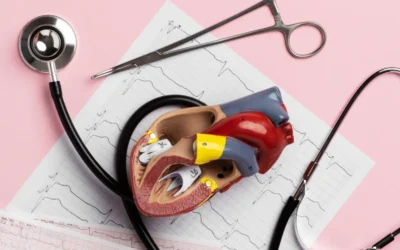The spleen is a vital organ responsible for filtering blood and managing immune responses. However, not everyone knows that some individuals are born with an accessory spleen—a smaller, additional spleen that often goes undetected. While typically harmless, accessory spleens can become clinically relevant, especially when diagnosing or treating conditions related to the spleen, such as splenomegaly or after splenectomy (spleen removal). Understanding the potential impact of an accessory spleen is important for proper diagnosis and management in medical care.
What Is an Accessory Spleen?
An accessory spleen, also known as a supernumerary spleen, is an extra splenic tissue separate from the main spleen. These small nodules are generally less than 2 cm in size and are most commonly located near the spleen or in the tail of the pancreas. They are present in about 10-30% of the population and are typically discovered incidentally during imaging or surgery for other conditions.
Accessory spleens are often functional, meaning they perform similar roles to the primary spleen, including filtering blood and managing immune responses. However, because they are so small and symptomless, most individuals are unaware of their presence unless complications arise.
Potential Health Implications of Accessory Spleens
While most people live their entire lives without any issues from an accessory spleen, there are situations where this extra tissue can have significant health implications:
- Post-Splenectomy Recurrence:
After spleen removal, typically done to treat conditions like idiopathic thrombocytopenic purpura (ITP) or trauma, an accessory spleen can grow and take over some of the spleen’s lost functions. In cases where a splenectomy is performed to address immune-related conditions, such as blood disorders, the remaining accessory spleen can regenerate, causing the return of symptoms. - Confusion in Diagnostic Imaging:
Accessory spleens can sometimes mimic tumors or lymph node enlargements in diagnostic imaging such as CT scans or MRIs, complicating diagnoses. Knowing about an accessory spleen’s existence is crucial for physicians interpreting scans to avoid unnecessary treatments or interventions. - Splenic-Related Diseases:
Accessory spleens can also be affected by the same conditions that impact the main spleen, such as splenomegaly (enlarged spleen) or splenic infarcts (areas of dead tissue in the spleen due to lack of blood flow). In these cases, accessory spleens may need to be evaluated or removed during treatment.
Diagnosis of an Accessory Spleen
Identifying an accessory spleen usually begins with a thorough clinical evaluation and medical imaging. Since accessory spleens are asymptomatic, they are typically discovered when imaging is conducted for other reasons.
- Imaging Techniques:
- Ultrasound: Often the first imaging method used to detect an accessory spleen due to its safety and non-invasive nature.
- CT Scan and MRI: Provide detailed cross-sectional images, which can help in distinguishing accessory spleens from other abnormalities, like tumors or lymph node enlargements.
- Nuclear Medicine Scans:
In cases where it is essential to verify that the accessory spleen is functional, nuclear medicine scans like a Technetium-99m sulfur colloid scan can be used. These scans can confirm the accessory spleen’s role in blood filtering and immune function.
Management of Accessory Spleen-Related Conditions
The management of accessory spleens typically depends on the context in which they are discovered. Most accessory spleens are left untreated unless they cause complications or are involved in an underlying condition.
- Post-Splenectomy Monitoring:
If an accessory spleen becomes active following a splenectomy and symptoms reappear, additional surgery may be required to remove it. - Surgical Removal:
In cases where an accessory spleen causes complications, such as pain, diagnostic confusion, or disease recurrence, laparoscopic surgery may be performed to remove the accessory spleen. - Ongoing Monitoring:
In situations where an accessory spleen is discovered incidentally, regular follow-ups and imaging may be recommended to ensure it does not develop any associated complications, especially in individuals with splenic-related conditions.
Conclusion
Though often asymptomatic, the presence of an accessory spleen can have significant implications in medical diagnoses and treatment, particularly in cases of splenic disorders. Recognizing and properly diagnosing an accessory spleen is essential for avoiding misdiagnoses and ensuring effective treatment in splenic-related conditions. Continued research and awareness can help improve outcomes for individuals where accessory spleens play a critical role in their health management.
References
- Halpert B, Gyorkey F. Lesions observed in accessory spleens of 311 patients. American Journal of Clinical Pathology. 1959;32(2):165-168.
- Valli M, Arese P, Gallo G, Flecchia D, Cristofori RC. Torsion of accessory spleen in an adult. Journal of Ultrasound. 2012;15(1):22-25.
- Gayer G, Zissin R, Apter S, Atar E, Portnoy O, Itzchak Y. CT findings in congenital anomalies of the spleen. The British Journal of Radiology. 2001;74(884):767-772.
- Unver Dogan N, Uysal II, Demirci S, Dogan KH, Kolcu G. Accessory spleens at autopsy. Clinical Anatomy. 2011;24(6):757-762.
- Mortele KJ, Mortele B, Silverman SG. CT features of the accessory spleen. American Journal of Roentgenology. 2004;183(6):1653-1657.
- Kim SH, Lee JM, Han JK, Lee JY, Kim KW, Cho KC, Choi BI. Intrapancreatic accessory spleen: findings on MR Imaging, CT, US and scintigraphy, and the pathologic analysis. Korean Journal of Radiology. 2008;9(2):162-174.





0 Comments